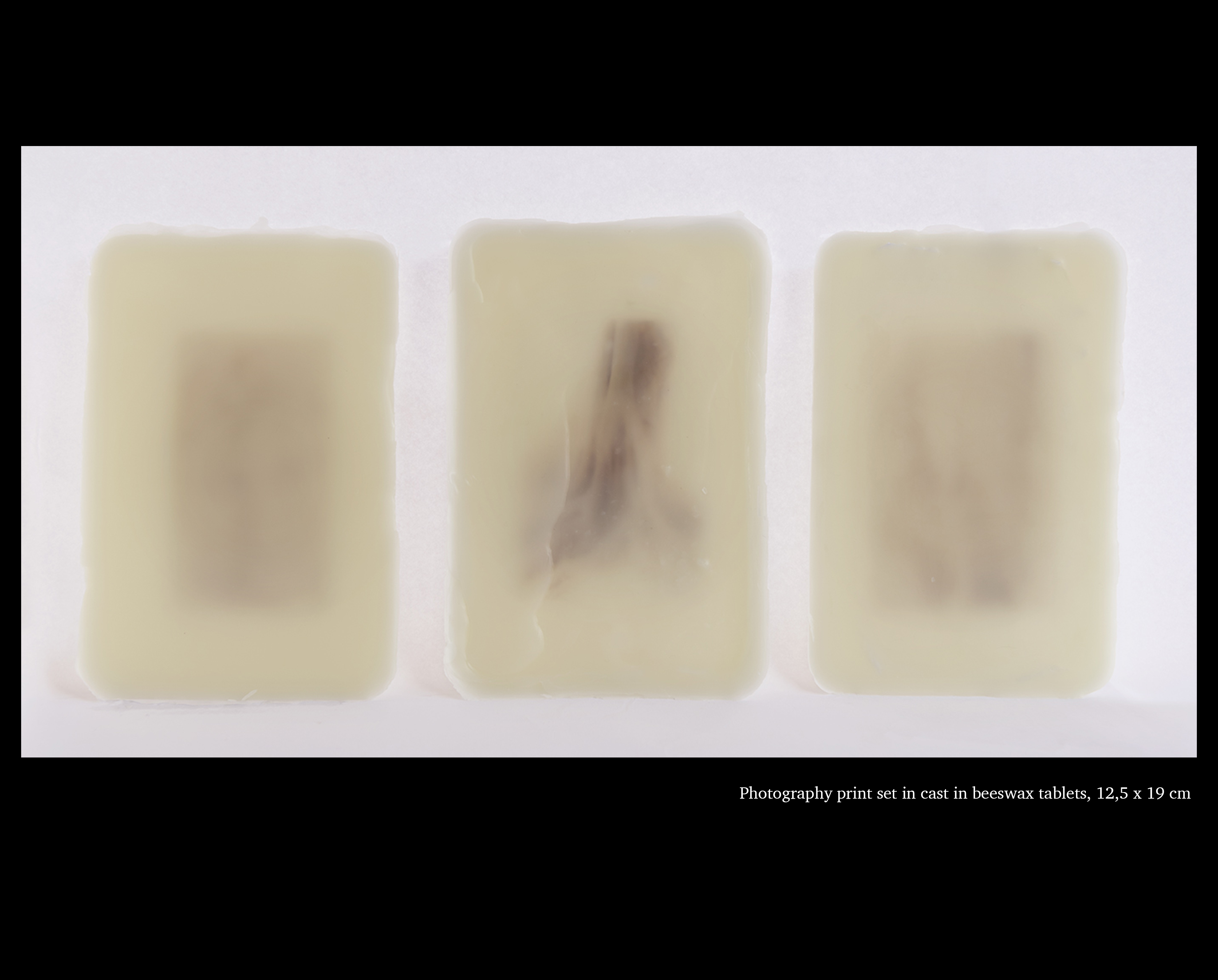The blood liquefied at 10 am - It will be a good year!
Every year, on September the 19th, thousands of people assemble and wait for the miracle: the liquefaction of Saint Januarius’ blood, which, according to the legend, was saved by
a woman just after his death. The archbishop tilts the ampoule with the solid blood through a very precise ritual of hand gestures. If the blood turns into liquid, it will be a good year.
Touching is always a mutual action: what is touched, touches back. This work is about the empty space where two surfaces seem to mingle, the proximity between my hands and images. In Ancient Greece it was believed that the act of seeing happened through a very thin film through which the scene reached the eye. It was this pelicula, a wafer-thin skin, that made things visible.
What’s the relationship between the act of seeing and touching? Do we touch when we cannot see? Do we touch in order to see better, to see further? Do we touch to stop seeing?



Candles were the firs lights, they were used to heat as well as to kee hopes and desires alive. Used in different kinds of rituals, they have always bond our visible, concrete and material world with invisible ones. A ritual is a repetitive sequence of gestures which is the external manifestation of an internal belief.
The blood liquefied at 10 am - it will be a good year! is a photography and installation work which consists of wax tablets laid out on a surface with floating heating lightbulbs suspended a few centimetres above them.
Every day, slowly heated, the opaque surfaces become transparent, allowing the images to appear.

Fondling images, hiding and revealing them, sometimes scratching, creasing or crushing them, they are brittle images, even so never fully grasped. As in Byzantine culture, the defacement and disappearance of the images was not an act of defilement but a sign of devotion, a recirculation of the painted body in the body of the beholder. The work has evolved through a study of gestures, the photographic gesture itself and the imprint process. Imprint is a very similar process to photography.
Unlike the latter which creates a specular resemblance, the imprint needs contact and proximity. The image becomes a matter of surfaces, its materiality a protection, gradually hiding and revealing it.
Wax is a prodigious and almost living material. Very similar to organic forms, it is malleable, it assumes the temperature and the form of
my body. Once heated, this ductile material is neither solid nor liquid. Images become viscous and sticky. Unstable and fragile, just a little heat would transform them, create an oscillation between form and formlessness. One part flows, changing its shape and the other one evaporates, mixing with oxygen. The evolution, change and disappearance over a certain period of time proves its instability and relates these images to living organisms.



Thanks to Parallel Photo based Platform for the support.